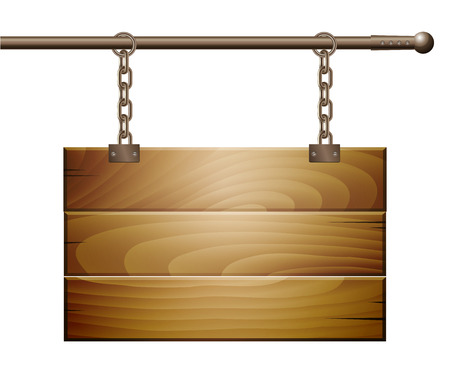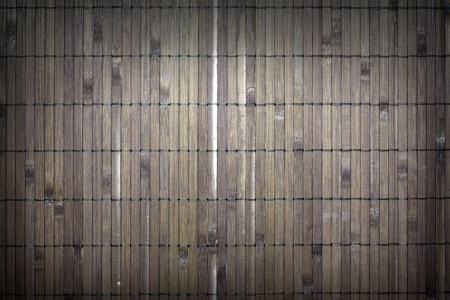1. Introduction to Fence Material Options
When it comes to choosing a fence for your home, the material you pick plays a big role in how your yard looks, how much upkeep it needs, and how well it handles your local weather. Whether youre trying to keep pets safe, add privacy, or boost curb appeal, picking the right fence material is more than just a style choice—its about making a smart investment for your property.
American homeowners have several popular fencing options, including wood, vinyl, metal, and composite. Each comes with its own set of pros and cons based on where you live and what you need from your fence. For example, if you live in a humid or rainy area, some materials will hold up better over time. If youre looking for something low-maintenance, others might be better suited.
Heres a quick comparison of the four main types of fencing materials commonly used across the U.S.:
| Material | Durability | Maintenance | Curb Appeal | Best For |
|---|---|---|---|---|
| Wood | Moderate | High (staining/sealing) | Classic & Natural Look | Traditional homes, privacy fences |
| Vinyl | High | Low (occasional cleaning) | Sleek & Clean Appearance | Low-maintenance yards, modern homes |
| Metal (Aluminum/Wrought Iron) | Very High | Low to Moderate (rust prevention) | Elegant & Open Design | Securty-focused or decorative fencing |
| Composite | High | Low (resistant to rot/insects) | Naturally Styled with Modern Benefits | Sustainable choices, long-term investment |
No matter where you live—from the dry Southwest to the snowy Northeast—climate plays a big part in how well your fence will age. That’s why it’s important to understand your options before making a final decision. In the next sections, well dive deeper into each material so you can find the best fit for your home.
2. Classic Charm: Wood Fencing
Wood fencing is a timeless favorite among American homeowners. It offers a warm, natural look that fits beautifully with both traditional and modern homes. Whether youre going for a classic white picket fence or a tall privacy fence, wood can be customized to suit your style and needs.
Aesthetic Appeal
One of the biggest reasons people choose wood fences is their visual charm. The natural grains and tones of wood bring a cozy, inviting feel to any yard. Plus, you can stain or paint the wood to match your homes exterior or landscaping theme.
Popular Wood Fence Styles
| Style | Description | Best For |
|---|---|---|
| Picket Fence | A short fence with evenly spaced vertical boards; usually painted white. | Curb appeal, front yards, garden borders |
| Privacy Fence | Tall, solid panels that block views and create seclusion. | Backyards, noise reduction, added security |
| Lattice Fence | A decorative option using crisscrossed wooden strips. | Trellises, garden areas, partial privacy |
Cost Considerations
The cost of wood fencing can vary based on the type of wood used. Common options include pine (more affordable), cedar (naturally resistant to rot), and redwood (premium choice). On average, installing a wood fence in the U.S. costs between $15 to $30 per linear foot.
Approximate Cost Comparison by Wood Type:
| Wood Type | Average Cost per Linear Foot | Main Features |
|---|---|---|
| Pine | $15 – $20 | Budget-friendly, easy to stain or paint |
| Cedar | $20 – $25 | Naturally weather-resistant, pleasant scent |
| Redwood | $25 – $30+ | Pest-resistant, rich color, premium quality |
Maintenance Needs
A wood fence does require regular maintenance to keep it looking good and lasting longer. This includes sealing or staining every 2–3 years, checking for rot or insect damage, and replacing broken boards when needed. Without proper care, wood fences are more prone to warping and weather damage compared to other materials.
Quick Maintenance Tips:
- Seal or stain your fence regularly to protect against moisture.
- Avoid direct soil contact at the base of the fence posts.
- Treat for termites if necessary in your region.
- Sweep away leaves and debris that can trap moisture.
If youre looking for a fence that adds character while offering flexibility in design, wood remains one of the most attractive choices for American homes today.

3. Low Maintenance and Durable: Vinyl Fencing
When it comes to choosing a fence for your American home, vinyl fencing stands out as a top pick for homeowners who want something that looks great but doesn’t require much upkeep. Whether youre in the suburbs or a more rural area, vinyl fences offer a clean, modern look with a lot of practical benefits.
Why Vinyl Fencing is a Popular Choice
Vinyl fences are made from durable PVC (polyvinyl chloride), which makes them resistant to many of the common issues that affect other fencing materials like wood or metal. Here are some key advantages:
- Pest-Resistant: Unlike wood, vinyl isn’t attractive to termites or carpenter ants.
- Weather-Resistant: It won’t warp, rot, or split due to rain, snow, or humidity.
- No Fading: High-quality vinyl fences are UV-resistant and maintain their color over time without needing repainting.
- Low Maintenance: Just rinse with a garden hose to keep it looking new—no staining or sealing required.
Installation Considerations
Vinyl fencing is typically installed using interlocking panels that snap into place. While it may seem simple, there are still a few things to keep in mind before installation:
- Professional vs. DIY: Although some homeowners choose to install vinyl fences themselves, hiring a professional ensures proper alignment and stability—especially on sloped terrain.
- Ground Preparation: Make sure the ground is level and clear of debris before starting installation.
- Zoning and HOA Rules: Always check with local zoning laws and homeowners’ associations to confirm height limits and style requirements.
Quick Comparison: Vinyl vs Other Materials
| Feature | Vinyl | Wood | Metal | Composite |
|---|---|---|---|---|
| Pest Resistance | Excellent | Poor | Good | Good |
| Weather Durability | Excellent | Poor to Fair | Excellent | Very Good |
| Mainenance Required | Low | High | Medium | Low to Medium |
| Lifespan (Years) | 20–30+ | 10–15 | 20–40+ | 25–30+ |
A Smart Long-Term Investment
If youre looking for a fence that holds up well over time with minimal work, vinyl could be exactly what you need. Its especially ideal for busy families or those who want a clean, polished look without having to worry about constant maintenance. Plus, its long lifespan makes it a smart investment for boosting curb appeal and property value.
4. Strong and Secure: Metal Fencing Options
When it comes to strength and security, metal fences are a top choice for many American homeowners. They offer durability, a classic or modern look depending on the style, and often require less maintenance than wood. Two of the most popular metal fencing options in the U.S. are aluminum and wrought iron.
Aluminum Fencing
Aluminum fences are lightweight, rust-resistant, and ideal for homeowners looking for an elegant look without heavy upkeep. Theyre commonly used around front yards, gardens, pools, and even commercial properties. Aluminum fencing is also available in a wide range of styles and colors to match different architectural designs.
Benefits of Aluminum Fencing:
- Rust-free and weather-resistant
- Low maintenance – no painting or staining needed
- Easy to install and adjust on uneven terrain
- Great for decorative purposes with multiple design options
Wrought Iron Fencing
Wrought iron is known for its timeless beauty and unmatched strength. Its heavier than aluminum and offers more robust security. Wrought iron fences are often used in historic homes, upscale neighborhoods, or anywhere a strong visual statement is desired.
Benefits of Wrought Iron Fencing:
- Extremely durable and long-lasting
- Offers high levels of security
- Customizable with ornate designs and patterns
- Adds property value and curb appeal
Quick Comparison: Aluminum vs. Wrought Iron
| Feature | Aluminum | Wrought Iron |
|---|---|---|
| Durability | High (rust-resistant) | Very High (stronger but can rust) |
| Maintenance | Low | Moderate to High (may need repainting) |
| Security | Moderate | High |
| Aesthetics | Sleek and modern or traditional styles available | Classic and ornate designs |
| Cost | Generally lower than wrought iron | Higher due to materials and customization |
Common Uses in American Homes
Aluminum fencing is especially popular around swimming pools due to its compliance with pool safety codes, as well as in suburban front yards where homeowners want a clean look without blocking visibility. On the other hand, wrought iron fencing is frequently found in urban settings, historic districts, or luxury properties where both aesthetics and security are priorities.
No matter which metal option you choose, both aluminum and wrought iron provide reliable performance while enhancing the look of your home.
5. Eco-Friendly and Versatile: Composite Fencing
Composite fencing is becoming a popular choice for American homeowners looking for an eco-friendly, low-maintenance alternative to traditional fence materials. Made from a blend of recycled wood fibers and plastic, composite fences offer the look of natural wood without many of its downsides.
What Makes Composite Fencing Eco-Friendly?
One of the biggest advantages of composite fencing is its sustainability. Since it uses recycled materials, it helps reduce landfill waste and lowers the demand for virgin timber. Many brands also manufacture their products using eco-conscious processes, making composite fencing a greener option compared to vinyl or metal.
How Does It Compare to Other Materials?
Let’s take a closer look at how composite fencing stacks up against wood, vinyl, and metal in terms of lifespan, maintenance, and appearance:
| Material | Lifespan | Maintenance | Visual Appeal |
|---|---|---|---|
| Wood | 10–15 years | High (painting, staining, sealing) | Natural and classic |
| Vinyl | 20–30 years | Low (occasional cleaning) | Smooth and modern |
| Metal (Aluminum/Steel) | 20–50 years | Moderate (rust prevention for steel) | Sleek or ornate styles |
| Composite | 25–30 years | Low (no painting or staining) | Wood-like with color variety |
Aesthetic Flexibility
Composite fences come in a range of colors, textures, and styles that mimic the natural beauty of wood while offering better color retention over time. Whether youre going for a modern vibe or a rustic charm, there’s likely a composite design that fits your yard’s personality.
Low-Maintenance Living
If you’re tired of sanding, staining, or replacing warped boards every few years, composite fencing offers peace of mind. Most products are resistant to rot, insects, moisture damage, and fading—making them ideal for busy families or those who want a “set it and forget it” solution.
Is Composite Right for Your Home?
If sustainability, durability, and minimal upkeep are high on your list, composite fencing might be worth considering. While it can have a higher upfront cost compared to wood, the long-term savings on maintenance often make up for it in the long run.
6. Choosing the Right Fence for Your Home
When deciding on the best fencing material for your home, there are a few key factors to think about beyond just looks. Budget, personal style, neighborhood trends, and even Homeowners Association (HOA) rules all play important roles in making the right choice. Heres a simple guide to help you compare options and make an informed decision.
Budget Considerations
Your budget will heavily influence your material choice. Some materials have a higher upfront cost but require less maintenance over time. Here’s a quick breakdown:
| Material | Initial Cost | Maintenance Cost |
|---|---|---|
| Wood | $$ | High (painting, staining, repairs) |
| Vinyl | $$$ | Low (just occasional cleaning) |
| Metal (Aluminum or Steel) | $$$$ | Low to Medium (depends on coating) |
| Composite | $$$$ | Low (durable and weather-resistant) |
Your Style Preferences
The style of your home can help determine which fence fits best. A traditional wood picket fence might complement a cottage-style house, while modern homes may look better with sleek metal or composite options. Vinyl is great for homeowners who want a clean look without much upkeep.
Neighborhood Trends
If most homes in your neighborhood use a certain type of fencing, it’s worth considering that option to maintain visual harmony. Matching styles can also help boost property values and avoid disputes with neighbors.
HOA Regulations
If you live in a community with an HOA, be sure to review their guidelines before choosing your fence. Many HOAs have rules about height, color, and materials. Violating these rules could result in fines or being required to remove the fence entirely.
Quick Tip:
Always get written approval from your HOA before installing any new fence!
Narrowing Down Your Options
If youre still not sure which material is best, ask yourself the following questions:
- How much time am I willing to spend on maintenance?
- Do I want privacy, decoration, or both?
- What’s my long-term budget including upkeep?
- Are there local weather conditions I need to consider?
Your answers can help steer you toward the most practical and attractive choice for your specific needs.


